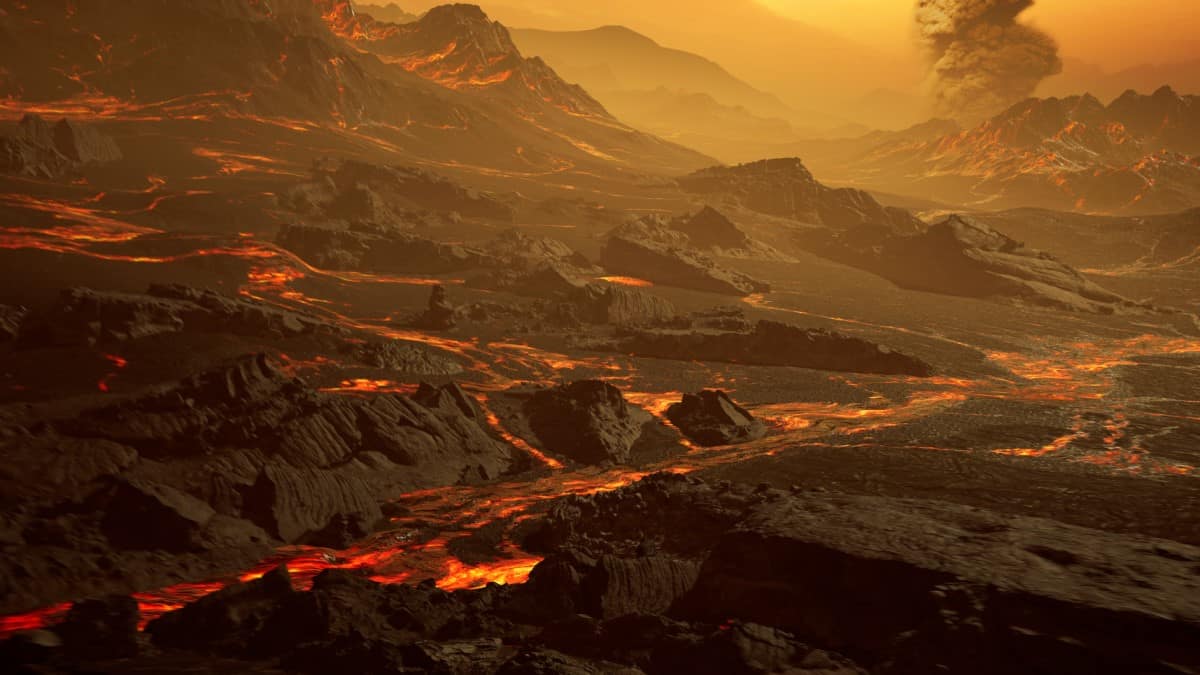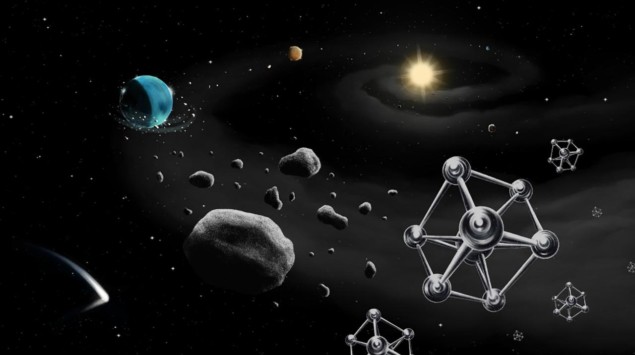Compositions of exoplanets and their stars have a surprising relationship, study reveals
27 Oct 2021
The chemical compositions of rocky planets are linked to that of their host stars, but the relationship is not as simple as previously thought – an international team of astronomers has discovered. The correlation was established by researchers led by Vardan Adibekyan at Portugal’s University of Porto, who studied the abundance of iron in 22 exoplanets orbiting Sun-like stars. The team says that its findings suggest that exoplanets resembling Earth (called super Earths) and exoplanets resembling Mercury (super Mercuries) are the result of different formation processes.
As they form, a star and its planets draw material from the same accretion disc of gas and dust. This has led some astronomers to predict that the chemical compositions of stars and their planets should have a specific relationship.
Except for the lightest elements, the atmosphere of a main-sequence star like the Sun should closely reflect the chemical abundances in the accretion discs from which it formed. Using spectroscopy to analyse light from a star, astronomers can determine the ratios of elements like magnesium, silicon and iron in the atmosphere of the star. From this, they can then work out the composition of the accretion disc from which the star and its planets formed.
Indirect measurements
Determining the composition of a rocky exoplanet, however, requires a direct measurement of its interior, which cannot be done. Instead, astronomers use an indirect technique that estimates the abundances heavier elements. This involves measuring the radius of an exoplanet as it passes in from of its host star and calculating the mass of the exoplanet by observing its gravitational influence on its star. These measurements give the density of the exoplanet, which is then used to estimate its iron content. This can then be compared to the iron content of its star.
Until now, this been done by studying a small number of exoplanetary systems, or through broad statistical comparisons involving large populations of exoplanets. However, both analyses have their limitations and clear correlation between the elemental abundances of stars and planets had eluded astronomers.READ MORE

In their study, Adibekyan’s team examined the compositions of 22 rocky exoplanets with masses less than 10 Earths. These exoplanets orbited 21 Sun-like stars. As expected, these observations revealed a clear link between the compositions of the stars and their planets. However, the relationship was not 1:1 as had been expected. Instead, the linear relationship between exoplanet iron and stellar iron has a slope of greater than four. In addition, the five iron-rich super Mercuries in the study appear as outliers when compared to the 17 super Earths
The astronomers conclude that the large slope suggests that both the chemical composition of accretion discs and planet formation processes play important roles in determining the final composition of planets. They also point out that their study suggests that super-Earths and super-Mercuries are distinctive types of exoplanets and may have been formed via different processes.
The research is described in Science.
from physicsworld.com 27/10/2021

Δεν υπάρχουν σχόλια:
Δημοσίευση σχολίου